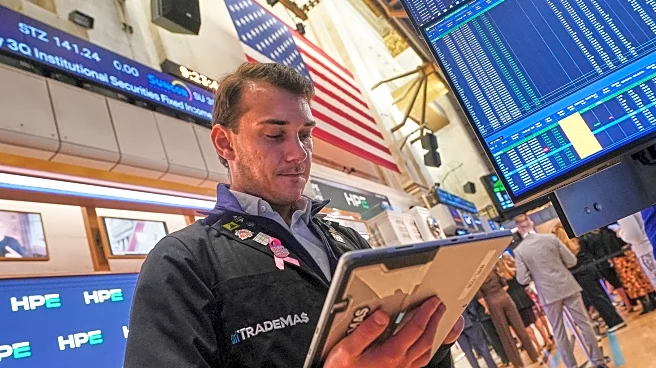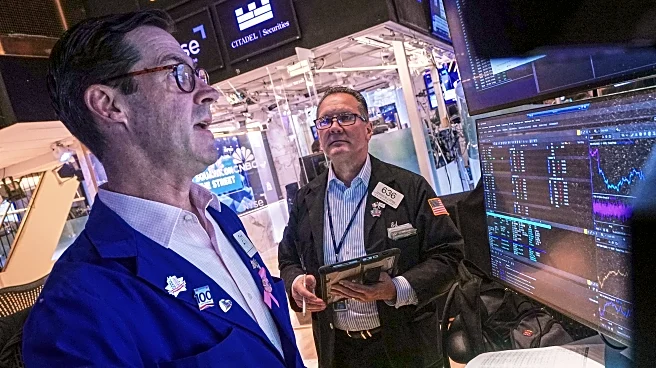What's Happening?
The stock market ended the week with a slightly firmer tone as urgent selling in regional banks subsided. The S&P 500 remained within a narrow range, reflecting investor uncertainty amid ongoing China
trade negotiations and credit market concerns. Despite a recent dip, the market showed signs of stabilization, with regional banks bouncing back slightly. The Volatility Index, which had been elevated, began to decrease, indicating reduced market anxiety. Gold prices also eased, providing relief from risk-off sentiment. The market's resilience is attributed to a self-sustaining AI investment boom and expectations of Federal Reserve rate cuts.
Why It's Important?
The stabilization of regional banks and the easing of market volatility are crucial for maintaining investor confidence and preventing broader financial instability. The market's ability to absorb shocks from trade tensions and credit concerns suggests underlying strength and resilience. The anticipated Federal Reserve rate cuts could further support economic growth by lowering borrowing costs and encouraging investment. The AI investment boom highlights the transformative impact of technology on the economy, driving innovation and productivity gains. These developments are vital for sustaining the bull market and supporting long-term economic expansion.
What's Next?
Investors will continue to monitor developments in trade negotiations and credit markets, as these factors could influence future market dynamics. The Federal Reserve's actions regarding interest rates will be closely watched, as they have significant implications for economic growth and inflation. The performance of regional banks and the stability of the Volatility Index will be key indicators of market sentiment. Stakeholders will assess the impact of AI investments on economic productivity and growth, as these technologies play an increasingly important role in shaping the future economy.












